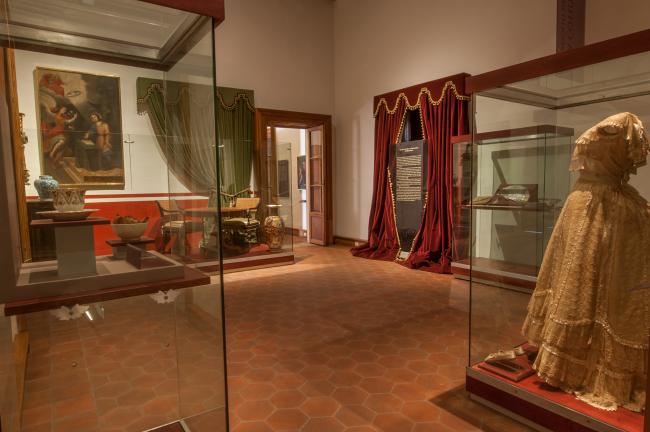
Daily Life in Valladolid de Michoacán
Sala
This section includes a depiction of the Dominican nuns' transfer to their new convent.
Life in the city of Valladolid (today’s Morelia), like the rest of New Spain, was deeply structured around religious faith and devotion. The cathedral’s bell marked the rhythm of the day, which was divided into seven parts—echoing the Book of Psalms, which commands praise to God seven times a day. The liturgical calendar shaped the annual cycle.
Leisure was also important. By the late 18th century, walking or carriage rides were common pastimes. The promenades of Guadalupe and Nuestra Señora de los Urdiales were favorite spots for Valladolid’s residents to show off their fashion and status. Music and social gatherings were beloved by the New Spanish people, who enjoyed cockfights, card games, and billiards.
Chocolate was the preferred beverage. Served hot or cold, it was consumed at parties, academic ceremonies, and public events. As a gesture of kindness and appreciation, the bishop and cathedral chapter offered chocolate mixed with water to parishioners during Lent.
Some prominent townspeople hosted friends in "tertulias" (evening gatherings), where they performed plays, read newspapers and books aloud, discussed politics and local affairs, and enjoyed music and dancing. Good hosts would pass around silver trays offering tobacco powder, rolling paper, and a small incense burner. Friar Francisco de Ajofrín remarked on tobacco use in New Spain: “Everyone smokes—men, women, and even the most delicate and refined young ladies.”


